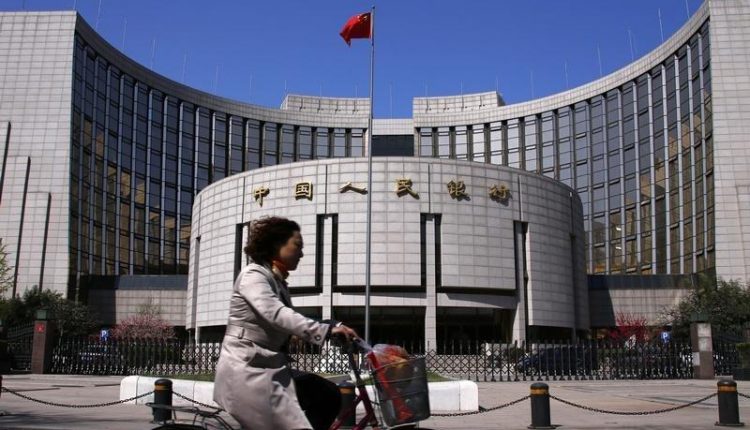China’s central bank keeps benchmark rates unchanged
China’s central bank has on Wednesday kept benchmark lending rates unchanged at a monthly fixing, in line with expectations, as fresh signs of economic stabilisation and a weakening yuan lessened the need for immediate monetary easing.
According to recent economic data, the world’s second-largest economy was finding its footing after a sharp slowdown, while yuan falls have reduced the urgency for authorities to aggressively decrease interest rates to prop up growth.
The one-year loan prime rate (LPR) was kept at 3.45 percent, while the five-year LPR remained unchanged at 4.20 percent.
Most new and outstanding loans in the Asian country are based on the one-year LPR, while the five-year rate influences the pricing of mortgages.
The steady LPR fixings follow the Chinese central bank’s decision last week to roll over maturing medium-term policy loans and keep interest rate on those loans on hold.
The medium-term lending facility (MLF) rate serves as a guide to the LPR, while markets see it as a precursor to any changes to the lending benchmarks.
Widening yield differentials with other major economies, particularly the United States, and faltering domestic growth have pressured the Chinese currency down more than 5 percent against the U.S. dollar this year, prompting authorities to ramp up efforts to rein in the weakness.
Zou Lan, a China central bank official told a news conference on Wednesday, that more attention should be given to the exchange rate of the yuan against a basket of currencies.
China will curb market disruptions, correct one-sided yuan moves and guard against the risk of the currency overshooting, Lan added.
“Monetary policy rollout maintains its steady pace, and there are still chances for reductions to LPRs next month,” Xing Zhaopeng, senior China strategist at ANZ, told Reuters.
“Net interest margin is not an obstacle for rate cuts as banks have lowered deposit rates.” Zhaopeng added.
He further said that economic data will continue to improve in the fourth quarter and that the low base effect will ensure growth exceeds 5 percent.
“The policy impact will extend to the next few quarters. We have revised our 2023 and 2024 GDP forecast up to 5.1% and 4.2%,” Zhaopeng said.
Earlier, People’s Bank of China (PBoC) last week lowered the amount of cash banks must hold as reserves for a second time this year to boost liquidity and support the economic recovery.
Despite the steady LPR, some market watchers indicated that recent property easing measures suggest cuts to the five-year LPR and more policy stimulus are likely in coming months.
“Looking forward, we expect property sales volume to stabilise gradually at low levels in the coming months, infrastructure investment to grow at a robust but slower pace on a high base,” Wang Tao, chief China economist at UBS, said.
“We maintain our real GDP growth forecast of 4.8% for full-year 2023. The development of property downturn, the magnitude and pace of policy easing still remain the biggest uncertainty for future growth trajectory.” Tao added.
In August, China cut the one-year benchmark lending rate but surprised markets by keeping the five-year rate unchanged.


